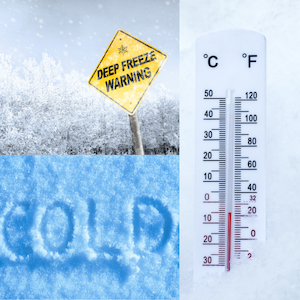|
Winter provides a magical and snowy backdrop for engaging and educational activities in the classroom. As primary teachers, incorporating measurement into winter-themed lessons can make learning more fun and engaging for young students. Check out 7 creative measurement activities that will not only capture the imagination of your students but also blend math and science ideas. Snowman Size ChallengeKids love building snowmen, so why not bring the fun into the classroom. Have your students build the snowmen just outside the classroom so they can see them throughout the day. If you add in some math and science, it will make the activity even more fun. Task: Get your students to measure the circumference of the different parts of their snowmen and then compare the results with their classmates. Math focus: measuring the size of different parts of a snowman helps with understanding shapes and sizes. Science focus: Observing the structure of the snowman introduces basic geometric principles. Fun thought: The snowman's middle could be as wide as a bear hug! Snow Depth InvestigationsWhen the snow falls, it doesn't fall evenly. it can be varying depths due to wind, landscape and nearby structures or trees. Task: Take advantage of this winter landscape by measuring the depth of snow in various locations. Students can use rulers to measure snow depth on the driveway, grass, under trees, and in snowdrifts. This activity not only teaches measurement skills but also encourages observation and data collection. Math focus: Using rulers to check how deep the snow is in different places, helps teach about numbers and spatial concepts. Science focus: Comparing snow depth in different locations encourages the understanding of weather patterns and how snow accumulates. Fun fact: The snow on the grass is like a fluffy pillow, while the snowdrifts resemble magical mountains. Winter Temperature StudyBraving the cold to measure temperatures on snow days is exciting for kids. As the wind howls and the snowflakes dance, students can collect temperatures and then use the data to make comparisons. Task: Explore the winter weather and record temperatures on snow days and compare them with non-snow days. Include the windchill factor. Math focus: Recording and comparing temperatures involves analyzing and interpreting data. Science focus: Understand the impact of windchill and how it makes the temperature feel colder. Winter Themed BakingCombine the joy of winter with the excitement of baking by creating winter-themed treats. Task: Practice following recipes and using precise measurements to make some delicious snacks. Math focus: Precise measurements in baking emphasize the importance of accurate calculations. Science focus: The baking process shows the transformation of ingredients, introducing basic chemistry concepts. Weight Of Different Snow TypesKids are excited to learn that different types of snow have different weights and why this is so. Task: Compare the weight of flaky, packed, and wet snow. Math focus: Weighing different types of snow involves understanding units of measurement and comparing weights. Science focus: Exploring the weight of snow types connects to the physical properties of water in different states. Fun fact: Packed snow feels like a heavy snowball, while flaky snow is as light as a snowflake gently falling from the sky and weighs very little. Snow Angel Wing Span MeasurementTake your students outdoors for some winter fun by making snow angels. After creating their snowy masterpieces, have them measure the wing spans of their snow angels. This activity combines creativity with measurement, making it a memorable and enjoyable experience for students. Task: Make snow angels and measure the wing spans. Math focus: Measuring wing spans involves comparing lengths and learning about spatial relationships Science focus: Creating snow angels introduces the physics of body imprints and the impact of pressure on snow. Melting Snow Volume ExperimentThe grand finale of our winter measurement activities is a melting snow experiment. Task: Explore the concept of volume by measuring the amount of snow in a bucket before and after it melts. Math focus: Measuring volume requires understanding of units and how they relate to three-dimensional space. Science focus: This experiment allows students to witness the transformation of a solid (snow) into a liquid (water) while practicing measurement and observation skills. Winter provides a unique opportunity to make measurement activities in the classroom exciting and relevant for primary students. By delving into these winter measurement activities, students not only strengthen their math skills but also develop a deeper appreciation for the science that surrounds them in the winter wonderland. The joy of discovery is not just in the snowflakes but in the math and science concepts that come to life during these hands-on adventures. Winter measurement activities aren't just about numbers and rulers; they're about creating lasting memories and instilling a love for learning. As primary teachers, let's embrace the enchantment of the season and turn our classrooms into snowy laboratories where every measurement tells a tale of winter wonder. The joy in their eyes and the laughter in the air will be the true measures of success in your winter measurement adventures. Related PostsComments are closed.
|
About Me Charlene Sequeira
I am a wife, mother of 4, grandmother of 9, and a retired primary and music teacher. I love working with kids and continue to volunteer at school and teach ukulele. Categories
All
|
















 RSS Feed
RSS Feed